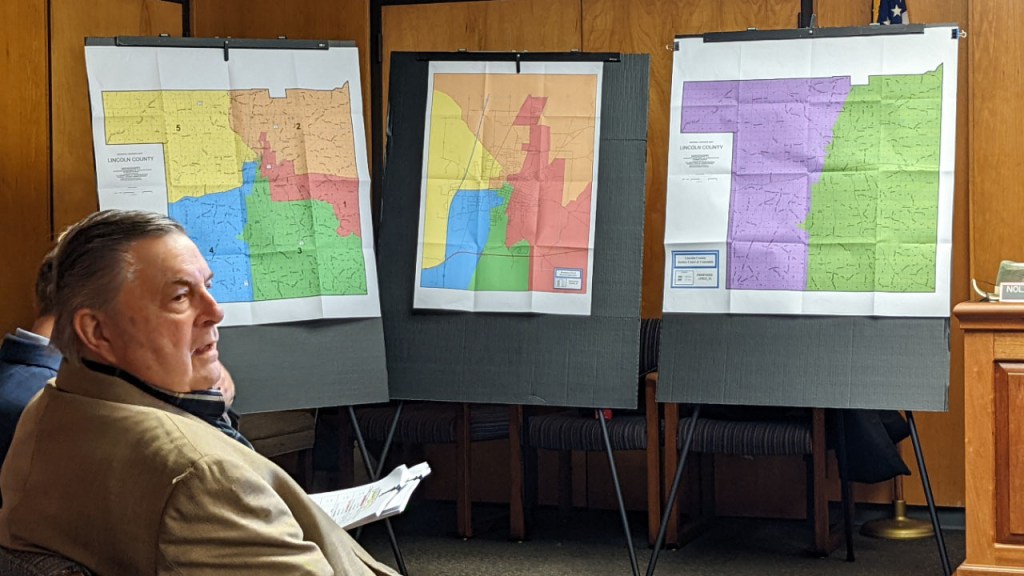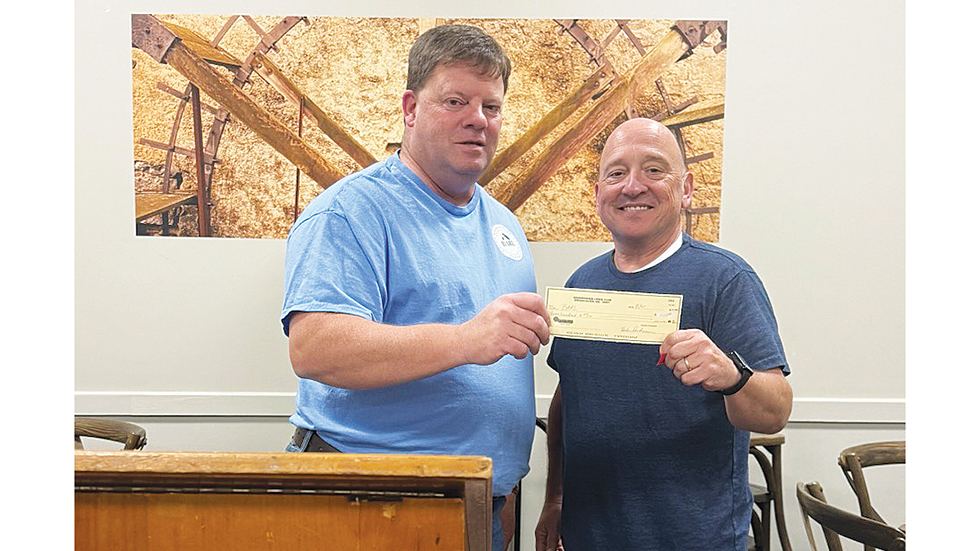Lincoln County supervisors examine redistricting maps
Published 4:00 pm Saturday, May 28, 2022

- PHOTO BY ANGELA CUTRER The Lincoln County Board of Supervisors reviewed redistricting maps during its most recent meeting.
The Lincoln County Board of Supervisors heard from Butler Snow representative B. Parker Berry during a public hearing Wednesday concerning the results of the board’s long-term planning on rearranging district maps according to the census.
Berry showcased three maps: one with current district lines, one with changes made to where district lines meet in the city of Brookhaven, and one showing the justice court/constable map.
In February, the board adopted preliminary recommendations on redistricting districts. They later advertised that the public hearing would be the time citizens could come before the board to voice any concerns.
Trending
There were no members of the public attending the public hearing Wednesday.
District 1’s Jerry Wilson said he “had been so busy,” he didn’t know the hearing was set for that day and he would “have liked to have invited some people to speak.” Wilson was reminded that there had been four working sessions already held to schedule discussions, public hearings and population distributions.
Regardless, Berry explained that on the maps he presented, the existing district lines were marked with dark black lines and the proposed new district lines were merely shaded the new color to show it now belonged to a different district. Each district was represented by a color.
Of the three maps displayed, the one to the left showed the current state of districts, the middle map showed a blown-up view of the city of Brookhaven — where almost all of the changes would occur — and on the right was the new proposed justice court/constable map.
“The criteria was to keep in mind ‘one person, one vote,’” Berry explained, “as well as the Voting Rights of 1972 and other tradition criteria.” That criteria included respect for incumbent’s homes, following natural boundaries when possible, having no islands of one district within another, and continuity of political subdivisions and municipal boundaries, which are not always possible.
The main issues were as follows:
Trending
• District 1 (shaded red) was down by a -9.63 variance and needed more voters of age.
• District 2 (shaded orange) was down by a -3.69 variance.
• District 3 (shaded green) was down by a -2.21 variance.
• District 4 (shaded blue) was up by a 10.06 variance.
• District 5 (shaded yellow) was up by a 5.47 variance.
The county is out of deviation 19.70 percent and needs to be under 10 percent total variance. The new redistricting would solve that issue by moving blocks of population, all within the city of Brookhaven area, to even out the voting population that has been counted by the census.
The new map’s shaded area now shows that District 1 would rise to 1 percent variance, District 2 has -1.40 variance, District 3 has -3.93 variance, District 4 has 2.11 variance and District 5 has 3.20 variance.
The census related that the population of Lincoln County stands at 34,907 and there are 26,514 citizens of voting age. When comparing the old map to the new, voter distribution will be as follows:
• District 1 goes from 4,725 voters to 5,233 voters.
• District 2 goes from 5,098 voters to 5,190 voters.
• District 3 goes from 5,135 voters to 5,047 voters.
• District 4 goes from 5,823 voters to 5,406 voters.
• District 5 goes from 5,733 voters to 5,638 voters.
This new redistricting would take the county from a 19.70 variance to a 7.13 variance, which is exactly where the county should be, Berry said.
As for the justice court/constables map, currently District One-North has 13,858 voters and Two-South has 12,656, which makes a 7.59 variance. The new proposed plan would put the District One-North at 13,001 voters and Two-South at 13,513, for a 5.54 variance.
Once Berry’s discussion was over, Wilson said he was “not satisfied.” Several other supervisors asked Wilson what he wasn’t satisfied about, but Wilson didn’t elaborate, except to say he didn’t trust the Bureau of Census’ count of how many people live in Lincoln County.
Berry paused, seemingly not sure how to answer that comment, but finally said, “Well that information comes from the Census Bureau and those are the numbers we are stuck with. There is nothing we can do about that. We draw these maps by blocks of information from the bureau.”





